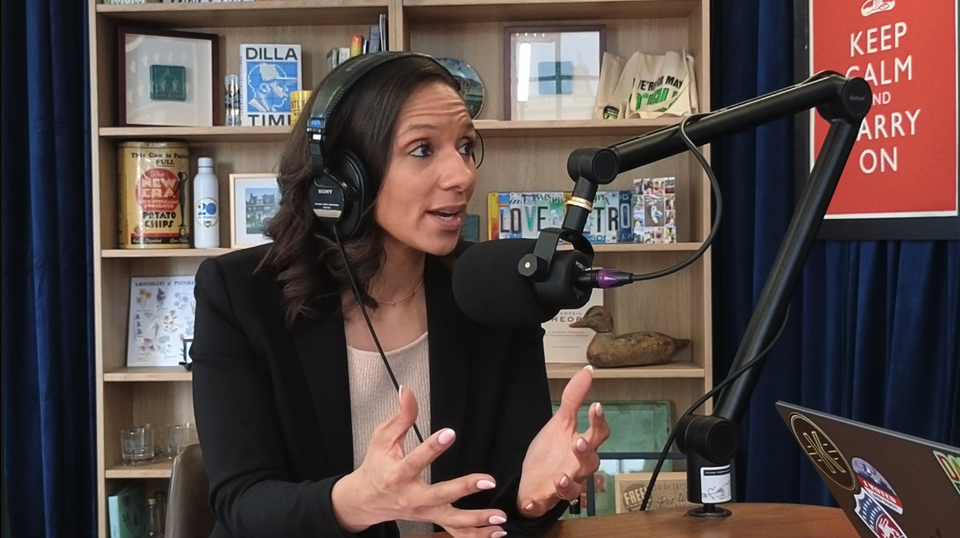This November, the Regional Transit Authority of Southeast Michigan is expected to propose a millage request to voters in Macomb, Oakland, Washtenaw and Wayne counties to improve public transit in metro Detroit. The plan calls for constructing dedicated bus rapid transit lanes along Gratiot, Michigan and Woodward avenues (see video here); creating commuter rail service between Ann Arbor and Detroit; and establishing transit to Detroit Metropolitan Airport.
The RTA is expected to release its master plan May 31, and decide on a final millage request later. The Detroit Free Press over the weekend reported that the millage is expected to come in around 1 or 1.1 mills, where 1 mill is equal to $1 per $1,000 in a property’s taxable value.

This is simultaneously an exciting and terrifying moment for transit supporters. When coupled with the construction of the M-1 Rail (now called the QLINE), and the Woodward Complete Streets proposal, the RTA represents a transformative opportunity for our region. Yet metropolitan Detroit has a long history of transit failures. Even now, various suburbs have opted out of funding SMART, creating gaping holes in its service area. I frankly have no idea whether the millage has a chance of passing.
But there’s another little-discussed aspect of our rapidly multiplying patchwork of transit options that concerns me maybe more than public support for an RTA millage, and would probably go a long way improve it. This paragraph from the Freep hints at the problem:
Macomb County Executive Mark Hackel has also raised questions about the RTA millage, saying he wants to make certain it does not end up hurting the millage-supported Suburban Mobility Authority for Regional Transportation. SMART, which is the Detroit area’s suburban bus system, along with the Detroit Department of Transportation, Detroit People Mover and Ann Arbor Area Transportation Authority fall under the RTA umbrella. M-1 Rail, the organization managing construction of the QLINE, is not part of the RTA currently but could be added in the future.
Here’s the point that’s key to whatever Detroit’s future transit system looks like: It needs to be simpler and more seamless. More of these separate agencies need to merge, probably — or at least learn to play better together. QLINE absolutely should be folded into the RTA.
Case in point: I live in Ferndale and occasionally take the bus to my job downtown. This is easy enough in theory: The nearest SMART bus stop is at the far end of my block, and the bus even runs express downtown — but only up until about 8:10 a.m. If I miss that final downtown-bound bus, SMART will take me only so far as the State Fair transit center, where I have to transfer to a Detroit Department of Transportation bus that runs local (and until recent service improvements, often made you wait a long time). Then if I want to hop on the People Mover — or, next year, the QLINE — I have to pony up separately, no transfers.
That’s not gonna fly for most people. Operating all these different systems that are of limited utility is inefficient, confusing, duplicative and no doubt more expensive than if they were brought under the same funding umbrella. And will the BRT buses be their own RTA-branded bus line, making three different bus systems for the Motor City?
The story has always been that you can’t easily merge DDOT and SMART bus systems because their drivers are both represented by the Amalgamated Transit Union; neither want to step on the other’s toes, and there have been disputes over funding and jurisdiction issues. Doing so would also be complicated by the turf battles that always break out whenever Detroiters perceive they are losing a city asset to outsiders (see Belle Isle).
But most transit riders, I suspect, don’t care about any of that. They just want the trains and buses to run on time. The RTA could greatly help its own cause by figuring out how to do just that.
There is hope, however, as Mode Shift reports, in the form of new regular express bus service between the suburbs and the city.
The new express line, refleX, will feature 13 stops on each of two corridors connecting Motown with its suburban neighbors, one along Woodward Avenue, and another on Gratiot Avenue. Both will start off at Fort Street and Brush Street in Detroit’s Bricktown neighborhood. The Woodward route, which will extend to Somerset Mall in Troy, will be run by DDOT and carry passengers in and out of Oakland County. As for the Gratiot route, it’ll be operated by SMART and travel between Detroit and Macomb County, stretching out to the North River Park and Ride in Mt. Clemens.
As an express service, refleX would have fewer stops and forego the need for transfers in order to facilitate faster travel.
Mode Shift reports the new service could launch as early as this summer and would run every seven days a week, from 5 a.m. to midnight on weekdays, 6 a.m. to 11 p.m. on Saturdays and 7 a.m. to 10 p.m. on Sundays.
More of this, please.
Editor’s Note: This post originally appeared on the 8 Wood Blog and is used with the express permission of the author. Check it out here.

















